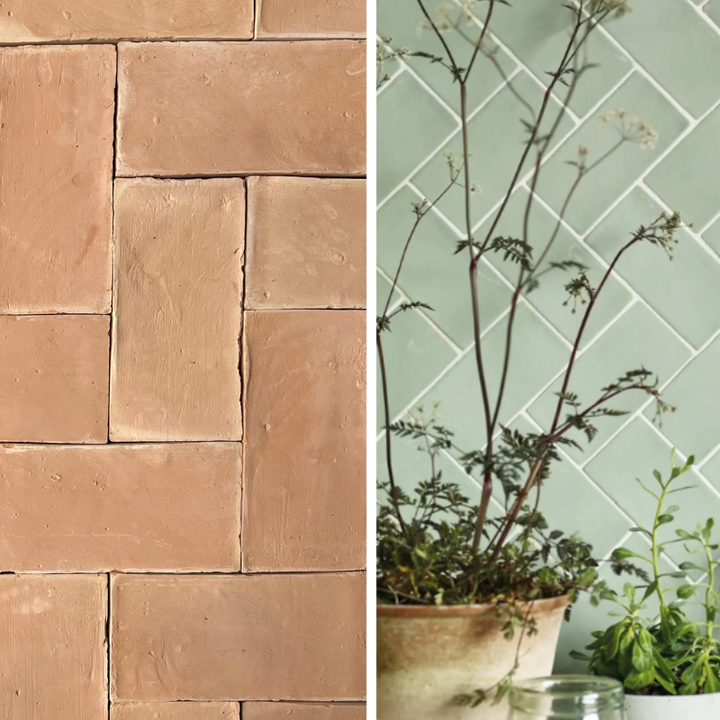Guide: Tile Laying Patterns
By Zoe Crook
Sep 1, 2022
The Tile Laying Patterns Guide
From a herringbone pattern to a contemporary staggered square pattern, tile laying patterns can help you add dynamic character to your space. If you're not sure where to start, consult our guide to different laying patterns for both your floor and wall tiles.
What Are The Different Tile Laying Patterns?
Here are some of the most popular tile patterns – all of which are suitable for both floors and walls.
Herringbone Pattern
The herringbone pattern can be used in almost any room to create an interesting accent on floors or walls. To achieve this pattern, rectangular tiles are laid in a zigzag to create V shapes at a 45-degree angle.

Brick Bond Pattern
The brick bond tile laying pattern, otherwise known as stretcher bond, is a traditional pattern with Victorian heritage. The brick bond pattern consists of each tile overlapping the tile above and below it. As a result, grout lines become offset. You can lay tiles in this pattern horizontally, vertically, or diagonally to create the illusion of space.

Staggered Brick Bond Pattern
A staggered brick bond pattern, or running bond, is a pattern where tiles are placed in alternate rows so that the pattern is offset from row to row. It's a variation of the brick bond pattern, the only difference being that tiles are slightly more 'staggered'. The offsetting makes a staggered brick bond very easy to install.
Stack Bond Pattern
The stack bond pattern is neat and simple. It is created by laying square or rectangular tiles in a traditional grid layout. It is one of the most straightforward flooring patterns to choose from if you are looking for a pattern that is easy to install. You can use this pattern to create a modern space with clean lines.

Basket Weave Pattern
The basket weave pattern is a classic and uses rectangle and square tiles to build a woven basket effect. It consists of three rectangle tiles laid vertically in line with each other to configure a square. This process is repeated to form more squares that are then laid next to each other leaving a gap between each. To fill the gaps, two rectangle squares are laid horizontally on top of each other. The pattern itself creates an interesting visual impact.

Staggered Square Pattern
The staggered square tile laying pattern helps to construct a creative look, while still maintaining the organised appearance of square tiles. Tiles are laid in neat vertical row, with the row below slightly staggered. This means that the grout lines do not match up. Lay the third row in line with the first row and repeat the process.

Linear Square Pattern
A linear square tile laying pattern is a style that features a straight, unbroken pattern of tiles to form a grid. Liner square patterns are commonly used on both walls and floors for a symmetrical, clean pattern.

Diagonal Pattern
A diagonal tile pattern otherwise known as a diamond pattern is a way of making a compact space appear larger. To create this geometric style pattern, lay square tiles at a 45-degree angle to form a diamond shape. You can also use rectangle tiles for this design.

If you would like to discuss tile laying patterns, book in for a Design Consultation with one of our experts who can guide you through the best pattern choice to complement your space.
And if you haven't chosen a tile see our tile collection.




